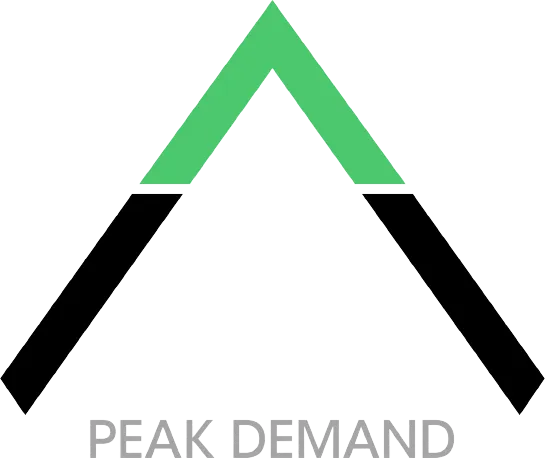Peak Demand Blog

Voice AI for HVAC Business: Top 5 Use Cases for Service Reminders, Lead Follow-Up, and Call Answering
Voice AI for HVAC Business: Top 5 Use Cases for Service Reminders, Lead Follow-Up, and Call Answering

Running an HVAC business means juggling a lot — customer calls, estimates, installs, service plans, and emergencies. And as things get busy, it’s easy for calls to go unanswered and leads to slip through the cracks. That’s where voice AI is stepping in to help HVAC companies work smarter, not harder.
Voice AI acts like a virtual assistant for your phone line. It can answer calls, follow up with customers, send service reminders, and even help fill your schedule — all without needing to hire extra staff.
More HVAC business owners are using voice AI not as a gimmick, but as a reliable way to:
Book more jobs automatically
Keep customers from falling through the cracks
Free up their team from repetitive admin work
Look and sound more professional on every call
If you’ve ever said “I need someone just to handle the phones” or “we don’t have time to follow up with everyone,” voice AI might be exactly what you’ve been missing.
Here are the top 5 ways HVAC companies are using voice AI today to save time, capture more business, and stay ahead.
1. Answering Calls 24/7 — So You Never Miss a Job

One of the most common reasons HVAC businesses turn to voice AI is to make sure every customer call gets answered, even when your team is in the field or the office is closed.
Missed calls are missed revenue. Whether it’s a weekend A/C emergency or a midweek maintenance inquiry, if no one picks up, most customers just move on to the next company.
Voice AI acts like a 24/7 receptionist. It answers the phone on your behalf and handles basic customer needs immediately.
Here’s what it does:
Answers calls during and after business hours
Greets callers with a friendly, professional voice
Asks qualifying questions to understand the request
Books service appointments directly into your calendar
Routes urgent issues to on-call staff or escalates when needed
This helps HVAC businesses:
Stop losing jobs to voicemail or missed calls
Make a better first impression, no matter when someone calls
Free up office staff from constantly answering phones
Maintain a consistent, responsive presence — even as a small team
If you’ve ever thought, “We’re too busy to answer every call,” voice AI makes sure that you don’t have to — and that no opportunity is left on the table.
2. Following Up on Quotes — Without Lifting the Phone

Every HVAC business owner knows the frustration of sending a quote and never hearing back. You’ve already spent the time assessing the job and building the estimate, but the customer goes quiet. Your team gets busy, and the follow-up never happens.
Voice AI solves this by automatically following up with those unbooked quotes — quickly, politely, and consistently.
Here’s how it works:
The AI makes a follow-up call a day or two after the quote is sent
It uses a natural, brand-aligned voice with a message like:
“Hi, this is a quick check-in from [Your Company] about the estimate you received. Do you have any questions, or would you like to book a time?”The customer can respond, ask to schedule, or get transferred to your team
You receive a summary of who’s interested, who declined, and who didn’t answer
This kind of automated follow-up ensures that your sales opportunities don’t go to waste. You’ve already earned their attention — voice AI helps you turn that into a booked job.
For HVAC companies looking to close more work without hiring a dedicated sales rep, this is a low-effort, high-return solution.
3. Sending Service Reminders That Keep Your Calendar Full

You probably have hundreds of past customers who need maintenance — they just haven’t been reminded yet. Whether it’s a spring A/C tune-up, a fall furnace check, or a reminder for a service plan visit, staying on top of these calls takes time your team may not have.
Voice AI takes care of that for you by sending automated, friendly service reminders that sound personal and professional.
Here’s how HVAC companies are using it:
AI calls customers before seasonal peaks to remind them to book
Messages can say something like:
“Hi, this is [Your Company] just reminding you it’s time to schedule your annual A/C check-up. Would you like to book that now?”It can take the booking, send a notification to your team, or leave a voicemail
Works great for one-time jobs or ongoing maintenance plans
This helps you:
Keep your technicians busy during slower weeks
Provide better service and reduce emergency breakdowns
Maintain strong relationships with past customers
Increase plan renewals by staying top-of-mind
If you’ve ever looked at an empty week on the calendar and thought, “We should reach out to our past clients,” this is how you do it — without adding hours of phone work.
4. Calling Back Missed or Abandoned Calls Automatically

You can’t answer every call — especially when you're out on jobs, short on staff, or working after hours. But when someone calls and hangs up or hits voicemail, that could be a lost customer. Most people won’t leave a message or try again — they’ll just call your competitor.
Voice AI helps HVAC businesses recover those opportunities by automatically calling back anyone who didn’t get through the first time.
Here’s how it works:
When a call is missed or abandoned, the AI follows up within minutes
It uses a friendly message like:
“Hi, we noticed you called [Your Company] earlier. Sorry we missed you — is there something we can help with today?”If the customer still needs service, the AI can take the booking or pass the call to your team
If it goes to voicemail again, it leaves a professional callback message
This helps HVAC companies:
Recover missed leads and convert them into paying jobs
Show customers that you're responsive and easy to work with
Keep your phone line working for you — even when you're not there to answer
For busy HVAC owners, this use case is a simple way to stop letting business slip through the cracks. It's like having someone watch your phone line, even when you're not.
5. Reaching Out to Inactive or Past Customers

You probably have a long list of customers you haven’t heard from in a while — maybe 6 months, a year, or even longer. These are people who already know your work and trust your business. They just need a nudge to come back.
Voice AI makes it easy to reconnect with past customers and bring them back for maintenance, follow-up visits, or service plan renewals — without taking up your team’s time.
Here’s how it works:
You give the AI a list of past customers
It makes polite, friendly calls with a message like:
“Hi, this is [Your Company] just checking in. We haven’t seen you in a while and wanted to see if you need any HVAC service or support.”It can offer to schedule a service call, transfer them to your team, or leave a voicemail
You get a list of responses showing who’s ready to rebook
This helps HVAC companies:
Reactivate their customer base with almost no effort
Fill gaps in the schedule with familiar, easy-to-book clients
Increase service plan renewals and long-term loyalty
Make use of leads and contacts they already paid to earn
For any HVAC business that’s been in operation more than a year or two, this use case is a goldmine. Voice AI helps you turn past work into future revenue — automatically.
Final Thoughts: Voice AI Is the Smartest Hire You’ll Never Have to Train

As an HVAC business owner, you already know how hard it is to keep up with every call, lead, and customer. You’re managing crews, quoting jobs, doing installs — and somehow, you’re still expected to follow up with every person who calls or asks for a quote.
Voice AI gives you a way to do all that without adding more hours to your day or more people to your payroll. It works in the background, calling customers, sending reminders, and following up — so you don’t have to.
Here’s what it helps you do:
Answer calls when your team can’t
Follow up on unbooked quotes
Send seasonal and maintenance reminders
Reconnect with past customers
Recover missed calls and convert them into jobs
It’s not complicated, and you don’t need to be “tech-savvy” to use it. You just need to be ready to stop losing time and money to tasks you shouldn’t be doing manually anymore.
Want to see how it could work in your business?
Learn more about the technology we employ.

Try Our AI Receptionist for Service Providers. A cost effective alternative to an After Hours Answering Service For HVAC
Peak Demand AI Agency Automation Services & SEO
Serving businesses and government across Canada and the U.S.
Read Our Peak Demand Blog
Peak Demand CA on LinkedIn
@PeakDemandCa on X (Twitter)
@PeakDemandCanada on Facebook
@PeakDemandCanada on Instagram
@PeakDemandCanada on Youtube
Toronto AI Agency Compliance Standards
- Canadian AI agency with enterprise-grade Voice AI solutions
- Regulated sectors: Healthcare, Government, Utilities, Finance,
- SOC 2 Type II readiness, HIPAA/PHIPA/PIPEDA alignment
- BAAs & IMAs available for U.S. and Canadian custodians
- Documentation: PIA frameworks, retention policies, encryption
- Privacy-by-design workflows & access control governance
- Audit-ready architecture with change logs & SLA
AI RFP Supplier Vendor Applicable NAICS Codes for Voice AI & IVR Solutions
541511 – Custom Computer Programming Services
Relevant for building custom Voice AI agents, IVR logic, and conversational AI workflows.
541512 – Computer Systems Design Services
Applies to integration of Voice AI with CRMs, ERPs, EMRs, and enterprise software systems.
541513 – Computer Facilities Management Services
Covers managed hosting, monitoring, and uptime support for AI-powered voice platforms.
541519 – Other Computer Related Services
Used for AI deployments that include analytics, call tracking, and cloud IVR functions.
517911 – Telecommunications Resellers
Pertains to reselling dedicated AI voice lines and virtual call center infrastructure.
518210 – Data Processing, Hosting, and Related Services
Supports services involving real-time voice data handling, transcript processing, and compliance storage.
519190 – All Other Information Services
For informational voice agents such as public service lines, 311 support, and automated directories.
561422 – Telemarketing Bureaus and Other Contact Centers
Directly applicable to Voice AI agents replacing or supporting live agents in call centers.
621999 – All Other Miscellaneous Ambulatory Health Care Services
Used for healthcare-related voice agents handling patient calls, triage, and scheduling.
541611 – Administrative Management & General Management Consulting Services
Relevant for voice AI vendors supporting RFP strategy, compliance, and automation consulting.
928120 – International Affairs
Used for multilingual or cross-border Voice AI deployments in government-facing RFPs.
926150 – Regulation, Licensing, and Inspection of Miscellaneous Commercial Sectors
For municipal and regulatory agencies using AI for permit intake, inspection scheduling, and more.
813920 – Professional Organizations
Applies to voice-based services used by membership associations, unions, and regulatory bodies.
Copyright © 2025 Peak Demand - All rights reserved.
This Website is Powered By and Built On Peak Demand

